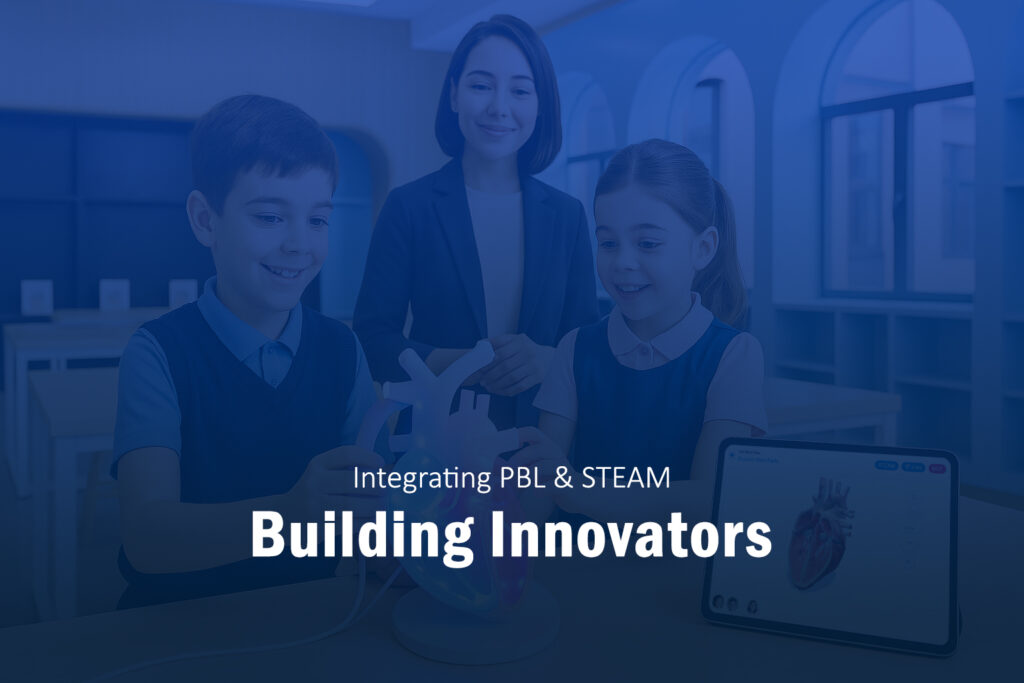Building Innovators: The Power of Integrating PBL and STEM - Why AI Needs Human Creativity

Innovation is the driving force behind progress in every field, from technology and healthcare to the arts and social change. As the world faces increasingly complex challenges, the need for creative problem-solvers and innovators has never been greater. Integrating Project-Based Learning (PBL) with STEM (Science, Technology, Engineering, Math) education is a proven way to build these skills in students. While AI can provide information and automate processes, it is human creativity, collaboration, and resilience that fuel true innovation.
Why Innovation Matters
Innovation is not just about inventing new gadgets-it’s about finding better ways to solve problems, improve lives, and create value. The World Economic Forum (2023) lists innovation, creativity, and complex problem-solving among the top skills for the future workforce. Yet, traditional education often stifles these abilities by emphasizing rote learning and standardized testing.
How PBL and STEM Foster Innovation
-
Real-World Problem Solving
PBL immerses students in authentic challenges that require them to think critically, collaborate, and develop original solutions. When these projects are rooted in STEM, students learn to apply scientific principles, engineering design, and technological tools to real problems. -
The Engineering Design Process
STEM PBL projects often follow the engineering design process: define a problem, brainstorm solutions, prototype, test, and iterate. This cycle mirrors the way innovators work in the real world and teaches students resilience and adaptability. -
Encouraging Risk-Taking and Iteration
Innovation rarely happens on the first try. PBL encourages students to experiment, embrace failure as a learning opportunity, and refine their ideas. This growth mindset is essential for innovators and entrepreneurs. -
Interdisciplinary Thinking
Real-world challenges don’t fit neatly into subject silos. Integrating PBL and STEM requires students to draw on knowledge from multiple disciplines, fostering flexible thinking and the ability to connect ideas in new ways.
Where AI Fits In
- Provide data and research support
- Simulate prototypes and processes
- Help visualize solutions
But AI cannot:
- Replace the creative leaps that lead to breakthrough ideas
- Foster the resilience and teamwork that result from real-world iteration
- Instill the ethical and social awareness needed for responsible innovation
Classroom Examples
- Entrepreneurship Projects: Students identify a community need, design a product or service, and create a business plan. They pitch their ideas to local entrepreneurs, learning about marketing, finance, and customer feedback.
- Innovation Challenges: Schools host “innovation days” where students form teams to tackle challenges like reducing plastic waste or improving accessibility in public spaces.
Research and Outcomes
A 2022 study in the Journal of STEM Education found that students engaged in integrated PBL-STEM projects demonstrated higher levels of creative problem-solving, entrepreneurial thinking, and confidence in tackling new challenges (Martinez et al., 2022).
By integrating PBL and STEM, schools can cultivate the innovators and entrepreneurs of tomorrow. AI is a valuable partner, but it is the human qualities of creativity, collaboration, and resilience that drive true progress.
References
- World Economic Forum. (2023). The Future of Jobs Report 2023.
- Martinez, S., et al. (2022). The Impact of Integrated PBL-STEM on Student Innovation. Journal of STEM Education, 23(2).
